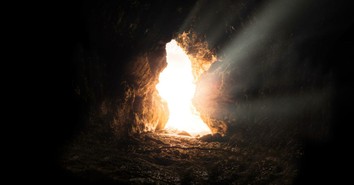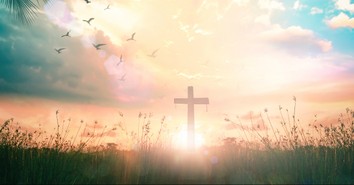Prince Caspian Is the Narnia We've Been Waiting For

DVD Release Date: December 2, 2008
Theatrical Release Date: May 16, 2008
Rating: PG (for epic battle action and violence)
Genre: Fantasy-Adventure, Adaptation
Run Time: 147 min
Director: Andrew Adamson
Actors: Ben Barnes, William Moseley, Anna Popplewell, Skandar Keynes, Georgie Henley, Sergio Castellitto, Peter Dinklage, voice of Eddie Izzard
The first film based on The Chronicles of Narnia book saga—The Lion, The Witch and the Wardrobe—did little to inspire hope for the second. A rote adaptation realized with bland execution, about the best thing that could be said of it was, "Well, at least they didn't screw it up." Though faithful to the book's narrative, the tone was flat, characters lacked distinction, and the aesthetic—while impressive—was generic.
With that as context, this can now be said: in every way that Wardrobe tried (or didn't) but failed, Prince Caspian succeeds. What was originally slavish adherence to the source has now become inspired cinematic faithfulness. Characters and relationships that lacked emotion and complexity now come to life with camaraderie and depth. And most importantly, the Aslan-as-Christ metaphor that seemed to be drawn merely out of obligation is now fully embraced. Prince Caspian is a major step forward and finally represents the Narnia we've truly been waiting for.
Unlike the book, the film opens in Narnia as we see Prince Caspian flee for his life. Long considered the heir to the throne (a seat his father held until his mysterious death), he is now threatened by the power-lust of his uncle Lord Miraz whose wife has now given birth to a son—an heir that Miraz schemes to take Caspian's place.
Fearful and desperate, Caspian uses a magical Horn to sound an alarm that legend says will call back the ancient kings and queens of Narnia. That royalty (as we know from the first story) is the Pevensie siblings—Peter, Susan, Edmund and Lucy—school-age Londoners who once ruled and brought restoration to Narnia, and the Horn belonged to Susan herself. Through the magic of its call, the Horn's alarm brings the Pevensies back to Narnia.
Upon their return, the Pevensies soon realize that while only a year has passed in their world, over a millennia has transpired in Narnia. Now in ruins under the rule of Telmarines (invader humans led by Miraz), the kids must reclaim their positions as kings and queens and help Prince Caspian take the throne that is rightfully his.
The prospect of Prince Caspian succeeding seemed dubious as director Andrew Adamson has returned for this second installment. One has to wonder if he spent a great deal of time trying to figure out how Peter Jackson got The Lord of the Rings trilogy right, because many of its successes are true here. Not only is there more visual flair (both in natural production and visual effects), but it also serves as a great example of how to adapt a work of literature to film.
While C.S. Lewis's book works as a solid basis for an action-adventure, to script it out literally (given its storytelling structure and brief action scenes) would not translate well to the language of film. Adamson and the other writers recognize this by weaving the book's first two separate acts seamlessly together. The script's extra-canonical liberties (magnifying the presence of Lord Miraz, staging battles that aren't even referenced in the book, etc.) all fit squarely into the spirit and tone of the novel rather than feeling like an opportunistic distortion of it.
The same can be said of the characters. When we first see Peter in London, he's in the middle of a physical fight with a fellow student. Though not in the book, this one moment instantly establishes Peter's warrior nature more distinctly than any scene from the first film. There is added depth as Peter's courage is textured with arrogance, giving his character (and all the relationships) an edge that ultimately must be humbled.
Similar gravitas is brought to the other characters—heroes, villains, and comic-relief alike (Reepicheep and his rodent platoon are brilliantly conceived)—at such a level that not only do themes resonate more profoundly, but emotions are felt more deeply. And Aslan, along with his challenging wisdom and air of mystery, is finally depicted in a way that creates legitimate chills.
Early on, the dwarf Trumpkin tells the Pevensies that Narnia may be more savage than they remember it. The same could be said to the viewers of the first film; here the tone is darker, the action more intense, and the substance more demanding. Where Wardrobe pulled punches, Prince Caspian packs, throws and delivers them.
"Lord of the Rings-lite" was a fair characterization of the first Narnia film and the same applies here, but the difference is that before it was a criticism and now it's a compliment. To put it simply, though one viewing of The Lion, The Witch and the Wardrobe is enough, I can't wait to see Prince Caspian again.
CAUTIONS:
- Drugs/Alcohol: None.
- Language/Profanity: None.
- Sexual Content/Nudity: Innocent romantic chemistry between Prince Caspian and Susan. One brief kiss.
- Violence/Other: Medieval combat violence (swordplay, kills, etc.) with visual allusions to decapitations (but doesn't actually visualize it), all set in a fantasy world.
Jeffrey Huston is a film director, writer and producer at Steelehouse Productions in Tulsa, Okla. He is also cohost of the "Steelehouse Podcast," along with Steelehouse Executive Creative Mark Steele, where each week they discuss God in pop culture.
To listen to the weekly podcast, please visit www.steelehouse.com or click here. You can also subscribe to the "Steelehouse Podcast" through iTunes.
Originally published May 16, 2008.





